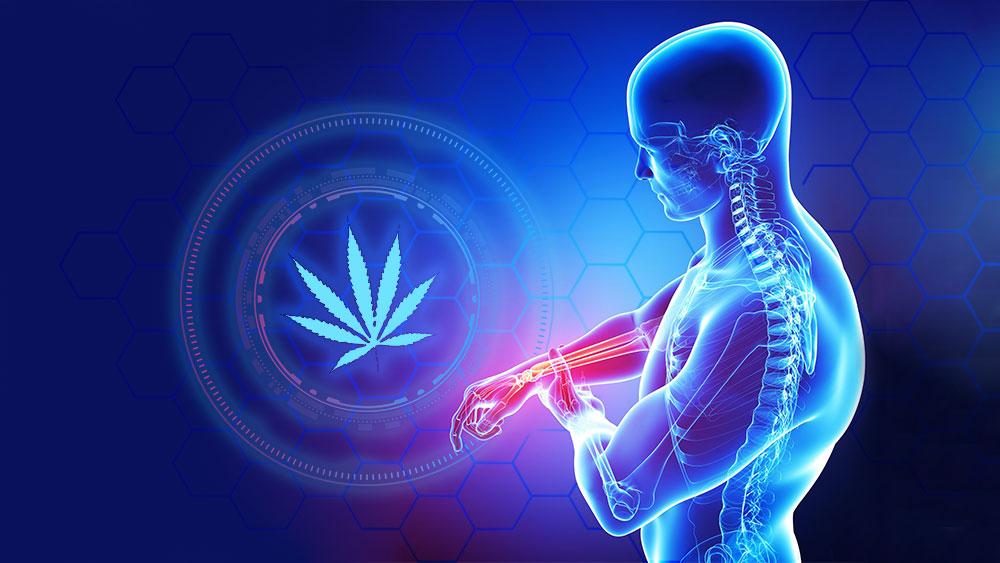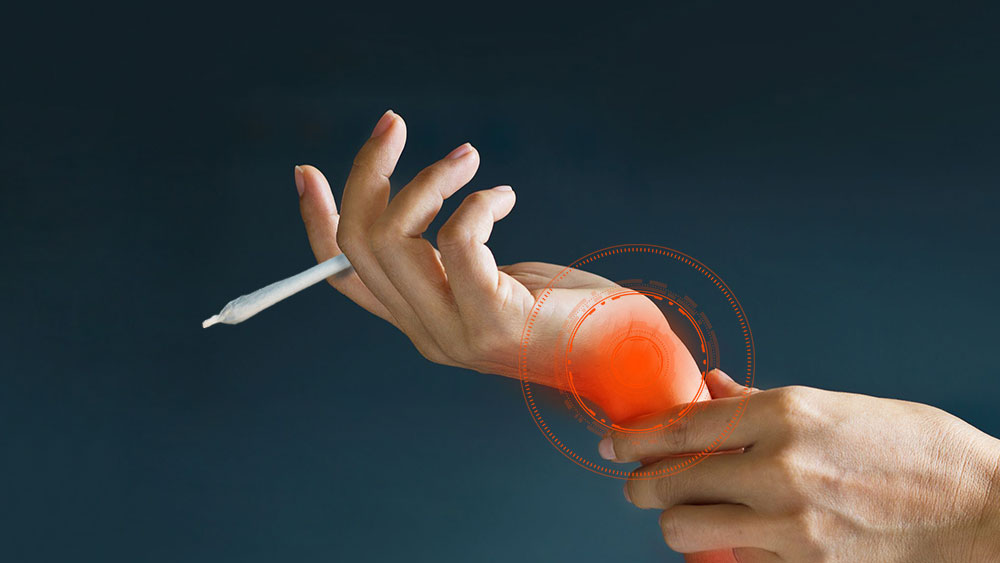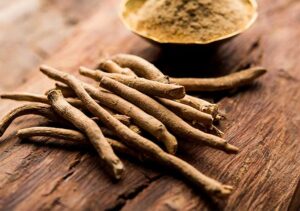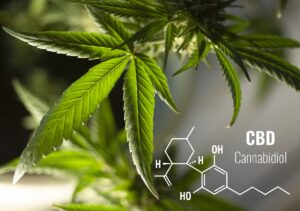Although arthritis is generally thought of as a condition of the elderly, you’ll be surprised to learn that it can affect people of any age, and sometimes even children.
There are many medications and ointments that can help with the pain, but they don’t work for everyone, which is why an increasing number of patients are itchy to try medical marijuana.
We’ve all been reading tons of personal stories on how cannabis helped patients, either as a supplement or as the only medication for arthritis. Even the research on this topic, which still lacks medical consensus, has been trying to prove that the connection between cannabis and arthritis actually exists.
The truth is that pot can help manage arthritis symptoms in many ways.
It can curb pain, reduce inflammation, and eventually provide relief, or temporary relief at the very least.
I wanted to find out more about the pot-arthritis connection, so I figured that the best way to start is to learn all I possibly can about arthritis before exploring the available clinical research.
So let’s jump right in.
Quick introduction to arthritis
Arthritis is an inflammation of the joints which causes pain and several other symptoms, but it’s just not one “single disease”, as many people think.
Although the term “arthritis” is usually used to refer to joint pain in general, the actual condition includes up to 200 different conditions and diseases: Like rheumatoid arthritis (RA), fibromyalgia, gout, lupus, osteoarthritis (OA) and many more.
The statistics say that around 15% of Canadians and 23% of Americans suffer from some form of arthritis. And this trend is on the rise, with the numbers expected to go up in the next couple of years.
Arthritis is a common condition among the aging population (over the age of 65), but it also affects younger people—56% of arthritis patients in Canada are under 65.
That being said, it seems that the age of onset is getting lower and lower as time goes by, and there are many reasons for that: Unhealthy diet.
The initial symptoms of arthritis are usually stiffness, especially in the morning, pain and swelling around the joints.
Then the other symptoms become more evident: You get tired more quickly than you used to, restless sleep becomes typical, and over the time it progressively becomes difficult to move joints and even to use your own hands.
There are many different types of arthritis, and equally many causes. Improperly healed injuries may lead to degenerative arthritis, genetic factors are usually the main cause of osteoporosis, a dysfunctional immune system can lead to lupus or RA, abnormal functioning of metabolism causes gout.
Once again, there is no cure for arthritis. Depending on the type of the disease itself, there are a few effective treatment options.
Here are just some medications that can be used to keep this condition in check:
- analgesics;
- nonsteroidal anti-inflammatory drugs (NSAIDs);
- immunosuppressants;
- corticosteroids;
- and counterirritants (creams with menthol and capsaicin).
As you can guess, some of the above may produce adverse side-effects: High blood pressure, weight gain or even loss of appetite, nausea, insomnia.
How cannabis plays with arthritis?
Over the past few years, cannabis has become a popular supplement among people suffering from arthritis. In every country where the plant has been legalized for medical use, arthritis is in the list of medical conditions that allow for the use of cannabis.
Arthritis is caused by the inflammation of the joint tissue, and cannabis is known as a great anti-inflammatory agent. There are many cannabinoids in the plant, but THC and CBD are the ones “in charge” for fighting pain and inflammation.
When researchers first noticed that cannabis has some potential in treating chronic pain, they basically didn’t have a clue how that happens.
They first discovered that the joints of people suffering from arthritis have extremely elevated levels of CB1 receptors. That led them to conclude that the substances in marijuana which trigger the activation of those receptors have a potential in reducing the inflammation, as well as reducing the pain. (1)

In another study discovered that THC was able to change molecules, leading to suppression of inflammation. (2)
The second most prevalent cannabinoid in marijuana called cannabidiol (or just CBD), has also shown to be effective in treating arthritis symptoms.
According to a study done by the University of Kentucky, applying CBD topically can relieve inflammation as well as pain in conditions connected to arthritis. What is also important, besides the great therapeutic potential, is that CBD provides relief without any side-effects. (3)
Another study found that early CBD treatment can prevent pain and nerve damage in osteoarthritic joints. (4)
What we can take away from these studies is that THC and CBD work in unison, but that high CBD marijuana strains may be the best choice in this case, giving us the best of both worlds—pain relief without the strong intoxication.
Arthritis patients’ experiences with cannabis
When it comes to the experiences of real patients, there are more than a few interesting stories.
Arthritis sufferers seem to find relief in cannabis, regardless of whether they smoke, eat edibles or apply topical ointments.
Here are just a few of the more interesting ones shared by arthritis patients.
Best strains for arthritis
Before you start experimenting with different strains for arthritis, think about your lifestyle and what you would like to achieve.
What time of the day do your symptoms occur? Would you rather treat inflammation or the pain? Do you have difficulties sleeping?
The key here is to choose the right strain: Some are energizing, some are sedative, some have a lot of THC, while some are high in CBD.
Exclusive bonus: Download a free dosage guide that will show you the exact step-by-step process Dr. Dustin Sulak used to successfully treat more than 18,000 patients with cannabis.
To speed up your search, I made a list with different kinds of strains, for different occasions.
Please take these recommendations with a grain of salt, as the effects of cannabis are notoriously subjective.
Find the right strain for you
Whether you want to relieve anxiety, pain or depression, the right strain is out there. Use our online tool to narrow the search.
Get StartedCannatonic
One of the most popular medical hybrid strains, Cannatonic is known for its high CBD levels and low THC content. It’s mainly used for treating all sorts of pain as well as muscle spasms, which makes it one of the favorites among arthritis patients. It’s great for relaxing during the day since it produces a mellow but euphoric type of high.
Anesthesia
The name says it all — it kills any type of pain in no time. Anesthesia is an indica strain recommended for nighttime use since it’s very sedating. It will give you a strong body-high and a cerebral buzz, so the best time to use it is only after you have finished with your day.
GSC
GSC, also known as Girl Scout Cookies, is a hybrid known for its high THC levels. It’s usually recommended for severe pain. Its high will fill you with happy and euphoric feelings, which is why arthritis patients find it more than useful. Besides pain, GSC is good in beating stress and depression (a common condition for arthritis patients).
Harmonia
Although it’s an indica, Harmonia will not make you as sedated and locked to your couch as you would expect. And this is because this strain has slightly higher levels of CBD than THC, which diminishes its psychoactive effects. You’ll be clear-headed and ready for the daily challenges.
Harlequin
What’s so great about this strain is that it relaxes without sedation and intoxication. Harlequin is a sativa-dominant hybrid, with high CBD content. It’s a popular strain for fighting inflammation and pain, especially pain caused by arthritis.
Remedy
A high CBD indica, Remedy has been primarily used for treating nerve inflammation pain. We can freely say that there are almost no psychoactive effects with this strain. Arthritis patients looking for relief can use Remedy during the day without worrying about feeling “high’.
ACDC
One more sativa-dominant hybrid that doesn’t alter the mood and mind. ACDC is a popular daytime strain with plenty of medical properties and almost no psychoactivity at all. What is so special about this strain is that it flushes pain out almost immediately.
Pennywise
Pennywise is a fine choice for an afternoon use since it provides a mild psychoactive effect. This strain not only blocks the pain, but it also helps other conditions and symptoms that come with arthritis, like neurological disorders.
Death Star
A very powerful indica that will make you quite high. Death Star is a perfect late afternoon choice, with high THC levels to take care of the pain. If you have trouble falling asleep because of your symptoms, Death Star will take care of that, too.
Power Plant
Being a pure sativa, Power Plant is a perfect way to start your day. It will make you talkative, euphoric and full of energy for the entire day. This strain has bone-protecting properties and, combined with pain-relieving features, is one of the best strains for arthritis patients.
References:
- Gui H, Liu X, Wang ZW, He DY, Su DF, Dai SM; Expression of cannabinoid receptor 2 and its inhibitory effects on synovial fibroblasts in rheumatoid arthritis; Rheumatology (Oxford, England); May 2014; 53(5):802-9
- Yang X, Hegde VL, Rao R, Zhang J, Nagarkatti PS, Nagarkatti M; Histone modifications are associated with Δ9-tetrahydrocannabinol-mediated alterations in antigen-specific T cell responses; The Journal of Biological Chemistry; July 2014, 289(27):18707-18
- Hammell DC, Zhang LP, Ma F, Abshire SM, McIlwrath SL, Stinchcomb AL, Westlund KN; Transdermal cannabidiol reduces inflammation and pain-related behaviours in a rat model of arthritis; European Journal of Pain; July 2016; 20(6):936-48
- Philpott HT, OʼBrien M, McDougall JJ; Attenuation of early phase inflammation by cannabidiol prevents pain and nerve damage in rat osteoarthritis; Pain; December 2017; 158(12):2442-2451








Ingrid November 12, 2018 at 7:44 am
Hi there. Ive just been diagnosed with Moderate Arthritis on my right ankle after breaking it over 4 years ago. I am a caterer and work on my legs for long periods of time. I'm a young 58 year old and can't possibly give up and don't want to either. Im a hard worker and would like to beat this. Can you help. Kind regards Ingrid
Terri L Clevenger March 31, 2019 at 11:33 pm
Hello, I am battling osteoarthritis and it has become quite painful, I am only 54, but find it incredibly difficult to work. My daughter has a medical card and gave me some loose "shake" to use. I am not sure how to properly activate it to make sure I am getting the benefits. She said I can put it in some oil in a crock pot and let it go for a few hours and that should do it. But other people, and websites have said to bake it in the oven instead. Do you have any suggestions? Thank you
Cheryl Reddish February 18, 2020 at 8:31 pm
Hi, I am a 52 yo female with Psoriatic arthritis and have been on several medications to help and to this time none have closer to helping than Humira which I have now become immune to. Every day is a struggle. Any suggestions? Thank you
Richard Hoover August 3, 2020 at 7:16 am
Can it help elderly arthritis patients?